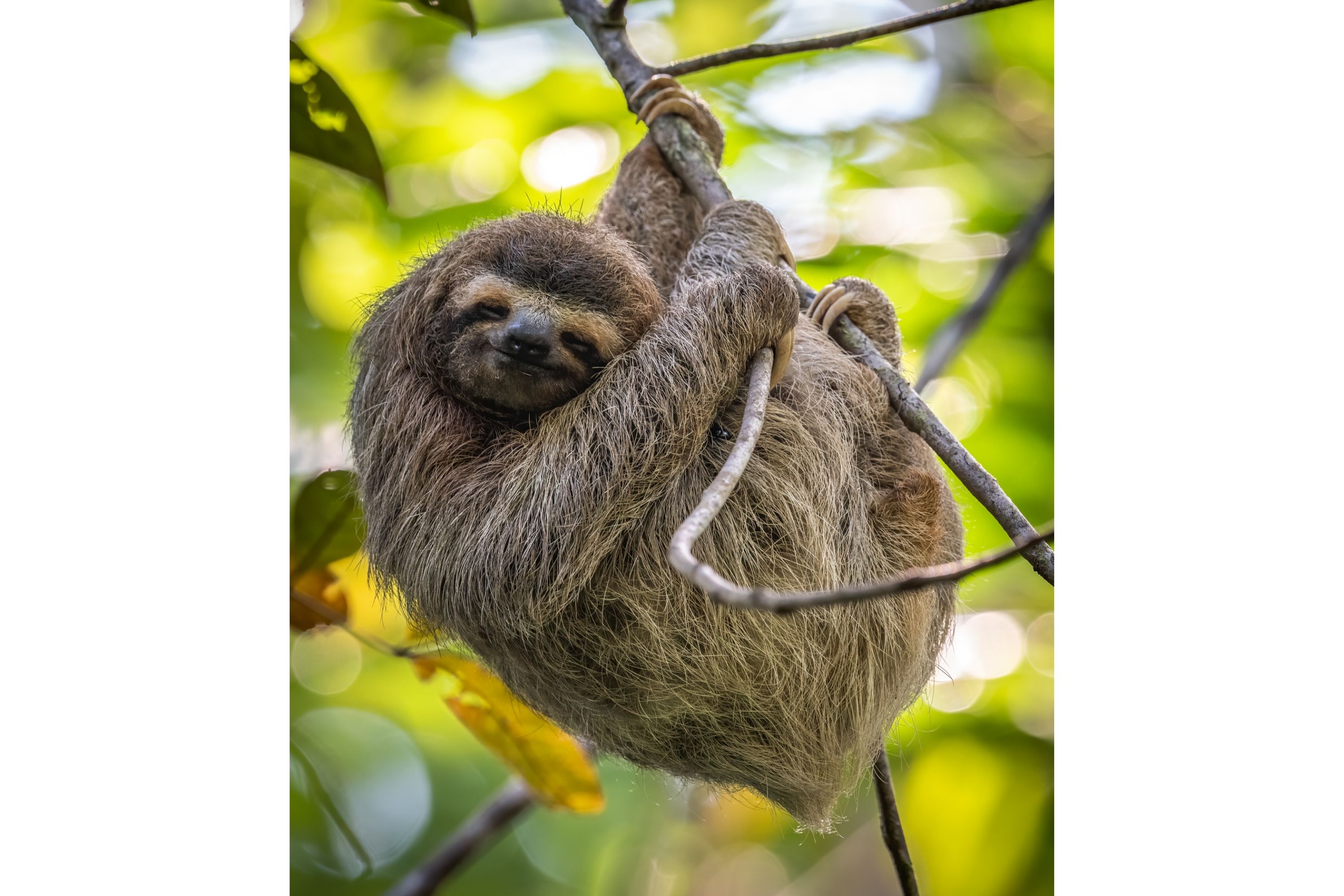Pygmy three-toed sloth
(Bradypus pygmaeus)

Description
The pygmy three-toed sloth (Bradypus pygmaeus), also known as the monk sloth or dwarf sloth, is a sloth endemic to Isla Escudo de Veraguas, a small island off the Caribbean coast of Panama. The species was first described by Robert P. Anderson of the University of Kansas and Charles O. Handley Jr., of the Smithsonian Institution in 2001. The pygmy three-toed sloth is significantly smaller than the other three members of its genus, but otherwise resembles the brown-throated three-toed sloth. This sloth, like other sloths, is arboreal (tree-living) and feeds on leaves. It has a body adapted to hang by its limbs; the large curved claws help the sloth to keep a strong grip on tree branches. It lives high in the canopy but descends once a week to defecate on the forest floor. It is symbiotically associated with green algae, that can provide it with a camouflage. Details of mating behavior and reproduction have not been documented. The pygmy three-toed sloth was first described by Robert P. Anderson of the University of Kansas and Charles O. Handley Jr., of the Smithsonian Institution in 2001. The researchers noted that the three-toed sloths found on Isla Escudo de Veraguas were significantly smaller than those that occur on the nearby outer islands of Bocas del Toro Province. Moreover, they differ from other populations in terms of pelage and cranial characteristics. Hence, they considered the three-toed sloths in Isla Escudo de Veraguas to be an independent species and formally described it from the skin and skull of an adult female. The researchers further pointed out that Isla Escudos de Veraguas is the oldest island and located farthest from the mainland, which began breaking up into small islands due to rises in sea levels 10,000 years ago. They proposed that this species evolved from an isolated population that had originated from the mainland population of brown-throated three-toed sloths; it gradually differentiated enough to become an independent species through insular dwarfism. In another study the following year, the researchers observed that the mean body size of three-toed sloths on an island decreases linearly as the age of the island increases; the area of the island and the distance from the mainland, however, do not appear to significantly affect dwarfing.
Taxonomic tree:







